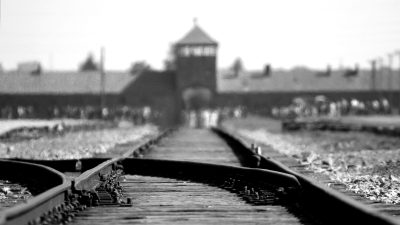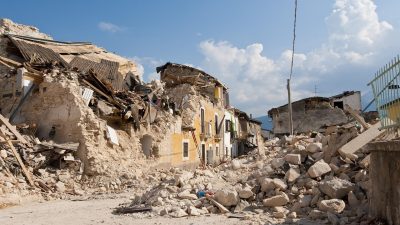Prophet Muhammad’s beloved grandson, chose death rather submission to injustice
In the scorching plains of Karbala, beneath a relentless heat, a small but unbreakable group of men, women, and children faced an army of thousands. Their leader, Imam Hussain ibn Ali, Prophet Muhammad’s beloved grandson, chose death rather submission to injustice. This was more than simply a struggle; it was a watershed moment in history, teaching us to stand up for what is right even when the odds are stacked against us. Karbala, a holy city in modern-day Iraq, became the setting for this tragedy in 61 Hijri (680 AD), when Imam Hussain and his loyal companions were brutally slaughtered by Umayyad soldiers in what is known as the ‘Incident of Al-Taff.’ Al-Taff was a blood sacrifice that created the true history of Islam, as justice stood up to oppression and faith conquered over fear. The sands of Karbala were covered with blood, yet its memory continues to inspire millions to fight injustice no matter what the cost.
The Roots of the Conflict
The Battle of Karbala was not an isolated event; its origins may be traced back to significant political and ideological divides within the early Islamic community. Following the death of Prophet Muhammad (PBUH) in 632 AD, the conflict started as a fight over leadership, legitimacy, and Islam’s essential values.
After the Prophet’s passing, Following the Prophet’s death, the Muslim ummah was divided over who should lead. While some supported Abu Bakr, others thought Imam Ali ibn Abi Talib, the Prophet’s cousin and son-in-law, deserved to rule. This debate eventually resulted in the foundation of two major Islamic sects: Sunni and Shia. Imam Ali eventually became the fourth caliph, but he was assassinated in 661 AD, forcing his son, Imam Hasan, to sign a peace treaty with Muawiya, Syria’s governor and the founder of the Umayyad empire.
Muawiya ruled with an iron fist, transforming the caliphate into a monarchy while violating Islam’s principles of justice and equality. In 680 AD, before his death, he appointed his son Yazid as his successor, breaking with the practice of leadership selection through consultation (Shura). Yazid was renowned for his corrupt, harsh, and dictatorship, which went against Islamic standards. He requested that Imam Hussain, Prophet Muhammad’s grandson, declare allegiance to him. But Imam Hussain, who stood for truth and justice, refused to acknowledge a ruler who represented tyranny, oppression, and moral corruption. Imam Hussain, held the belief that leadership should not be hereditary, but based on piety, justice, and the teachings of the Prophet. His refusal to accept Yazid’s rule was both a political and moral stance. This refusal set the way for the disaster of Karbala.
The Events Leading to Karbala
The Political Climate in Kufa:
Kufa (a city in modern-day Iraq) was experiencing political instability and considerable unhappiness with Umayyad rule, notably under Yazid’s oppressive leadership. The people of Kufa, dissatisfied with his leadership, wanted a replacement leader who might restore justice. They sent Imam Hussain many letters and notes requesting him to join their cause and launch a rebellion against the Umayyads, giving their full assistance. Imam Hussain saw a chance to restore justice and harmony and chose to travel to Kufa.
Imam Hussain’s Departure from Medina:
Imam Hussain, along with his family and a small group of loyal supporters, set out for Kufa from Medina in early 680 AD, a significant decision to stand against an unjust rule despite knowing the dangers that lay ahead. Along the way, Imam Hussain stopped at several places, but as they neared Kufa, his caravan was intercepted by Yazid’s army, marking a shift from a peaceful journey to a direct confrontation with the Umayyad forces.
The Interception at Karbala:
Imam Hussain and his caravan were stopped by Yazid’s army at Karbala, a barren desert area near the Euphrates River (in present-day Iraq). Despite Imam Hussain’s determination to reach Kufa, he was forced to make a stand at Karbala, where he and his followers were surrounded by Yazid’s forces. Led by Umar ibn Saad, Yazid’s army strategically positioned themselves to prevent any further movement toward Kufa, and in a cruel move, they cut off access to water by blockading the Euphrates River. This left Imam Hussain and his companions vulnerable, enduring the unbearable heat of the desert without water, as they faced the impending storm of battle.
The night before battle
Imam Hussain gathered his companions and family members, offering them the choice to leave, as they were under no obligation to fight in what seemed like a futile battle. Yet, his companions, moved by their deep loyalty and inspired by his steadfast commitment to justice, chose to stay by his side. Imam Hussain’s decision to face the overwhelming odds was a testament to his unwavering commitment to the truth and his refusal to bow to tyranny, even at the cost of his own life.
The battle of Karbala
The Battle of Karbala, fought on 10th Muharram 61 AH (October 10, 680 CE), is one of the most tragic and significant events in Islamic history. Imam Husain’s supporters, numbering only 72, faced an army of over 30,000. Despite being vastly outnumbered, the companions of Imam Husain pushed the enemy back, causing confusion and fear within their ranks. In response, the enemy set fire to Imam’s tents, which housed mostly women and children, and reinforced their troops. The battle raged on as Husain’s supporters, including his son Ali Akbar, his brother Abbas, and other family members, fought bravely. Ali Akbar, after slaying many enemy soldiers, was eventually overwhelmed and martyred. Imam Husain rushed to retrieve his son’s wounded body. Abbas, attempting to fetch water for the thirsty children, was surrounded by the enemy and fatally wounded before he could return. The sons of Imam Hasan, Zaynab, and other young relatives, all in their teens, also fought with immense courage, facing the enemy and embracing martyrdom alongside their elders.
By afternoon, 70 of Imam Husain’s brave supporters had sacrificed their lives in Karbala, enduring severe thirst, exhaustion, and the agonizing uncertainty of what would happen to the Prophet’s family. Imam Husain, witnessing the brutal deaths of his loved ones, was left to face the enemy alone. In the midst of the battle, he heard the cries of his six-month-old son, Ali Asghar, suffering from thirst. Filled with boundless love for his child, Imam Husain held the baby in his arms and appealed to the enemy for water, hoping for a moment of mercy in the midst of the cruelty.
Imam wanted to awaken their conscience and stir their human feelings but the stone-hearted enemy, instead of giving water, zoomed an arrow toward the agonizing baby and killed him instantly. Imam Husain was shocked. He felt an unbearable wave of pain. The sight of the limp baby in his arms was agonizingly painful. He filled his palm with the blood of the baby, and threw it upwards toward the sky, complaining to Allah (swt),
“O’ Allah, O’ my Lord! My consolation is the fact that Thou in Thine Majesty are witnessing what I am going through.”
https://al-islam.org/articles/karbala-chain-events
A man against thousands, Imam Husain (a.s.) was by himself. He fearlessly faced them head-on and continued to battle, taking numerous wounds along the way. He was surrounded by thousands of hostile warriors, but none of them dared approach him.
When Shimr called for an attack and then again, threatening, the hush was broken. They all attacked at once, and one sword landed on Imam Husain’s left wrist, severely cutting his left hand. Like a fountain, the blood poured out.
He attempted to stand by resting on his sword, but he was in danger of going into shock. Then he was struck to death. At this moment, Shimr, whose mother was an atheist, stepped up and cut Imam Husain’s noble head—which the Prophet (S) frequently kissed—off of his body! Shimr and others dared to transport it 600 miles away to Yazid on the tip of a spear.
Umar Ibn Saad ordered the horsemen to trample upon the supine bodies of Imam Husain and all others killed, to disfigure them even further, as if the wounds, the bloodied bodies, and the headless forms were not enough.
The bodies of the martyrs were left uncovered in the Karbala desert for three days. They were later buried with assistance from the Bani-Asad tribe, who lived close to the battlefield.
The women and children were taken as prisoners in shackles by Umar Ibn Saad and his troops (acting on behalf of Bani Umayya), who then placed them on camels and drove them in a caravan from Karbala to Kufa.
It was a pitiful and terrible scene. This was the remainder of Prophet Muhammad’s (S) loved family, in such abhorrent, unthinkable condition, all because of those who claimed to be Muslims.
https://www.worldhistory.org/article/1645/battle-of-karbala/
Consequences: How Karbala Changed the World
The tragedy of Karbala became a turning point in Islamic history. Instead of securing Yazid’s rule, it ignited widespread resentment against his leadership. Over time, the sacrifice of Imam Hussain became a symbol of resistance against oppression.
However, Yazid never succeeded in achieving what he and his father had hoped for since, within three years, Allah’s anger befell him, and he passed away at the age of 33. And Bani Umayya’s rule ended and collapsed in a few of decades.
The events of Karbala significantly deepened the ideological and theological divide between Shia and Sunni Muslims. For Shia Muslims, Imam Husain’s martyrdom became the ultimate symbol of resistance against tyranny and oppression. They view the battle as a defining moment in the struggle for justice, with Husain’s refusal to pledge allegiance to an unjust ruler embodying the struggle for moral and spiritual integrity. On the other hand, many Sunni Muslims tend to focus on the political aspects of the conflict, viewing the succession dispute as a foundational event that led to the division of the Muslim community. The differing perspectives on Karbala have shaped the beliefs and practices of both sects, making the divide more pronounced over time, especially in terms of religious authority, rituals, and leadership.
Ashura, the 10th day of Muharram, is observed annually by Muslims around the world, with particular emphasis among Shia communities. It is a day of mourning and reflection on the sacrifices made by Imam Husain and his companions. Shia Muslims commemorate the event through mourning processions, public reenactments of the battle, and lectures that recount the events of Karbala. These rituals are a way of honoring Husain’s stand for justice and keeping the lessons of Karbala alive for future generations. For Shia Muslims, Ashura is not just a historical remembrance; it’s a living tradition that connects them to the ideals of resistance, sacrifice, and moral clarity.
The Battle of Karbala has also served as a powerful inspiration for revolutionary movements throughout history. Imam Husain’s stand against the tyrannical rule of Yazid resonated deeply with later generations of people who faced oppression and injustice. The values of resistance, sacrifice, and standing up for what is right, no matter the cost, have motivated numerous revolutions, from the Abbasid revolt against the Umayyads to modern political uprisings in the face of authoritarian regimes. Leaders and activists have drawn parallels between their struggles and Imam Husain’s martyrdom, seeing in his sacrifice a call to challenge injustice and fight for a better, more equitable world. The legacy of Karbala, therefore, transcends its religious significance, becoming a universal symbol of courage and resistance in the face of overwhelming adversity.
Why Karbala Still Matters Today
Karbala is more than just a historical event; it is a universal lesson in standing against injustice. It teaches resilience, courage, and the importance of upholding one’s principles, no matter the cost. Whether viewed religiously, politically, or morally, the message of Karbala transcends time and continues to inspire millions around the world.
Imam Hussain’s words before his martyrdom encapsulate the essence of his mission:
“I am not rising for evil, nor for arrogance, nor for corruption, nor for oppression, but I am rising to seek reformation in the nation of my grandfather.”
When Zainab was asked, “What did you gain from Karbala?” she replied: “When truth dies, someone must pay the price to resurrect it.” Hussain paid that price, and his sacrifice became a beacon for the oppressed.
Conclusion: The Desert Still Speaks
The Battle of Karbala is a defining moment in Islamic history that resonates deeply with Muslims around the world, symbolizing the ultimate sacrifice for justice and truth. Imam Husayn’s unwavering courage and steadfast commitment to his principles in the face of overwhelming adversity continue to inspire countless generations. The lessons of Karbala—resilience, sacrifice, and standing firm against tyranny—remain as relevant today as they were over 1,300 years ago. Today, millions of people make the pilgrimage to Karbala, where the soil still bears the weight of Husayn’s sacrifice. The golden dome of his shrine stands tall, a defiant symbol that tyranny may fade, but principles rooted in justice endure. Somewhere in the world, right now, a child is hearing the story of Hussain for the first time, and in that moment, the spirit of Karbala is reignited.
Final Thoughts
The tragedy of Karbala is a stark reminder of the cost of standing for righteousness. Imam Hussain’s tale continues to motivate movements for justice and truth around the world, proving that his sacrifice was not in vain. His legacy endures in the hearts of all who fight for justice against oppression.
The tragedy of Karbala is a stark reminder of the cost of standing for righteousness. Imam Hussain’s sacrifice was not in vain; his story continues to inspire movements for justice and truth worldwide. His legacy lives on in the hearts of those who seek to uphold justice in the face of tyranny.
The question that remains for all of us is: Would we have stood with Imam Hussain that day?
Source:AL-Islam
Distance between Medina and Karbala about 1,100 miles.
Distance between Ibn Ziyad in Kufa and Yazid in Damascus about 750 miles.
Average travel by camel per day: 30-45 miles.
Sources
- Mowlana Rafiq H. Naqvi, Khutbas at Salat of Jumu’a, Idara
- al-Azhari, M. H. The Tragedy of Karbala: The Prophet’s Grandson’s Struggle against an Oppressive Tyrant.
- Al-Khateeb, F. Lost Islamic History by Firas Alkhateeb. C Hurst & Co (Publishers)Ltd, 2020.
- Mowlana Amir M. Faizi, Muharram Majlis, Idara.




